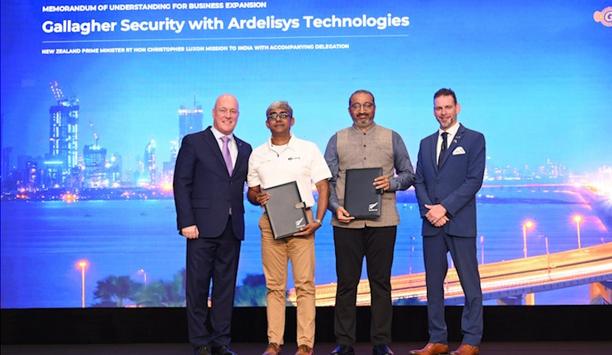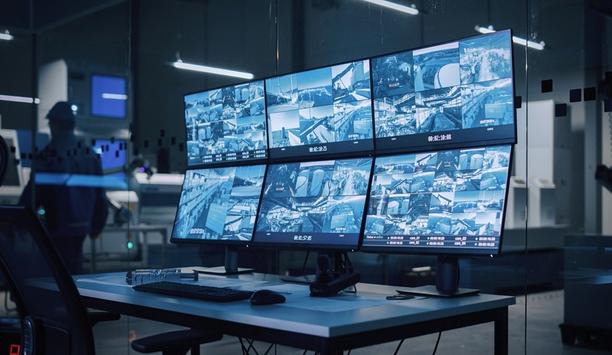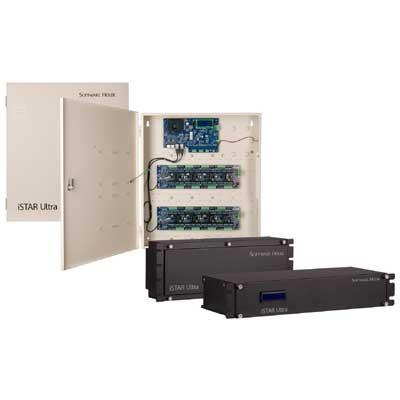Companies at GSX 2023 emphasised new ways that technologies such as artificial intelligence (AI) and the cloud can address long-standing issues in the security market.
Among the exhibitors at the event in Dallas were companies seeking creative ways to apply technology, lower costs, and make the world a safer place. Reflecting on the exhibition, here are some additional takeaways.
Expanding AI at the edge
i-PRO is a company reflecting the continued expansion of edge AI capability in the security market.
Today, more than half of the company’s lineup supports AI at the edge so the customer has a wide choice of form factors when seeking to leverage the feature set.
AI processing relay, extended warranty
i-PRO is increasing their warranty period from 5 to 7 years, which could be a lifetime warranty in some cases
I-PRO also has an “AI processing relay” device that accepts non-AI video streams and applies edge analytics. AI has progressed from a high-end technology to a feature available in a variety of cameras at different price points.
i-PRO is also increasing its warranty period from 5 to 7 years, which could be a lifetime warranty in some cases depending on a customer’s refresh schedule and lifecycle management.
Active Guard, MonitorCast
The company’s video management system (Video Insight) is continuing to build new features including “Active Guard,” an integrated metadata sorter. Their access control platform, MonitorCast, is a Mercury-based solution that is tightly integrated with Video Insight. Their embedded recorders now have PoE built in.
“We can move at a faster pace to fill out our product line since leaving Panasonic,” says Adam Lowenstein, Director of Product Management. “We can focus our business on adapting to the market.”
Emphasis on retail and other verticals
Shoplifting is a timely issue, and retail is a vertical market that got a lot of attention at GSX 2023. “We see a lot of retailers who are primarily interested in protecting employee safety, but also assets,” says Brandon Davito, Verkada’s SVP of Product and Operations. “Shrinkage is a CEO-level priority.”
“Retailers are getting more engaged with security posture, instead of letting perpetrators walk,” Davito adds.
Intrusion detection
Verkada has an intrusion product that will notify a central station if there is an alarm
On the alarm side, Verkada has an intrusion product that will notify a central station if there is an alarm, and operators can review videos to confirm the alarm.
Other capabilities seeking to discourage trespassers include sirens, strobes, and “talkdown” capabilities.
International expansion
Verkada continues to expand internationally with 16 offices in all, including Sydney, Tokyo, and London. The core value proposition is to enable customers to manage their onsite infrastructure more simply, including new elements such as PTZ cameras, intercoms, and visitor management.
Verkada emphasises ease of use, including a mobile application to allow access to be managed across the user base.
Forging partnerships
“We are committed to the channel and industry, and we continue to build relationships and expand our reach,” says Davito.
Among the industry relationships is a new partnership with Convergint, which was hinted at during the show and announced later the same day. They are also expanding their partnerships with Schlage, Allegion, and ASSA ABLOY.
Working with other verticals
They offer new features for K -12 schools, and a new alarm platform is easier to deploy and manage
Verkada has also found success across multiple other verticals, notably healthcare, where they integrate with an electronic medical records system. They offer new features for K-12 schools, and a new alarm platform is easier to deploy and manage.
They are integrating wireless locks to secure interior doors in schools, looking to secure the perimeter, and installing guest management systems.
Transitioning the mid-market to the cloud
Salient is squarely focused on the “mid-market,” a large swath of systems somewhere between small businesses and enterprise-level systems.
Pure cloud systems are not as attractive to this market, which has a built-out infrastructure of on-premise systems. Adding a camera to an existing system is easier and less expensive than tying it to the cloud.
Benefits of cloud
It’s a market that may not be ready for the pure cloud, but there are benefits to be realised from adding a cloud element to existing systems. “We are continuing to augment our premise-based solutions with added cloud capabilities and flexibility,” says Sanjay Challa, Salient’s Chief Product Officer.
The feedback Salient hears from their customers is “I want to own my data.” The hybrid cloud approach offers the right mix of control, flexibility, and unit economics.
Cloud add-on capabilities
We want to provide the flexibility for customers to go full-cloud as it becomes more economically attractive"
Cloud add-on capabilities include bringing more intelligence about system operation to the user via the cloud. Over time, Salient expects to sell more cloud-centric offerings based on feedback from integrators and customers.
“We want to provide the flexibility for customers to go full-cloud as it becomes more economically attractive over time,” says Challa.
Vaidio AI technology
Salient seeks to be a transition pioneer to help customers realise the path to the cloud. Their approach is “crawl, walk, run,” and helping customers make the transition at each stage.
Salient has added AI to its product offering, incorporating Vaidio AI technology from IronYun into a powerful suite and broad array of on-premise analytics, which are gaining traction. The seamless approach makes it easy for customers to embrace AI analytics, although Salient remains broadly committed to open systems.
Addressing ‘soft’ features for integrators
AMAG is in the process of enhancing its product line with the next generation of access control panels. However, “product” is just part of the new developments at AMAG.
In addition to “hard” features (such as products), the company is looking to improve its “soft” features, too; that is, how they work with the integrator channel.
Integrator channel
Rebuilding a process to make your organisation more efficient, is relatively easy; it just takes a lot of persistence"
“We have the depth of our legacy customer base we can learn from, we just need to close the feedback loop quicker,” says Kyle Gordon, AMAG’s Executive Vice President of Global Sales, Marketing, and commercial Excellence, who acknowledges the value of reinstating face-to-face meetings after COVID. “We are laser-focused on nurturing our integrator channel,” he says.
“Developing new features takes time, but rebuilding a process to make your organisation more efficient, that’s relatively easy; it just takes a lot of persistence,” says Gordon. More cohesive internal communication is another useful tool, he says.
Disrupting the cloud based on price
Wasabi is working to make cloud applications less expensive by offering a “disruptive” price on cloud storage, $6.99 per terabyte per month (80% less than hyperscalers). Contending “hyperscalers” like AWS are charging too much for cloud storage, Wasabi is using its own intellectual property and server equipment co-located in data centres around the world.
Wasabi sells “hot cloud storage,” which refers to the fact that they only have one tier of storage and data is always accessible. In contrast, a company such as AWS might charge an “egress fee” for access to data stored in a “colder” tier.
Cloud storage
“We saw that several video surveillance companies had not yet adopted cloud storage, and we saw an opportunity to make it easy to use,” said Drew Schlussel, Wasabi’s Senior Director of Product Marketing.
“We just install a little bit of software that allows them to store data in the cloud and bring it back from the cloud.”
Performance, protection (cybersecurity), and price
Wasabi works with integrators, resellers, and distributors and also integrates with VMS companies
Wasabi works with integrators, resellers, and distributors and also integrates with VMS companies such as Genetec and Milestone.
Emphasising performance, protection (cybersecurity), and price, their data centres are certified to SOC 2 and ISO 27001 standards.
Faster throughput for weapons detection
Xtract One is a young company focusing on weapons detection in a time of accelerated concern about gun issues post-COVID. Founded in Canada and based on technology developed at McMaster University, Xtract One has found a niche in providing weapons detection at stadiums and arenas.
These customers already have budgets, and it is easy to shift the money to a newer, faster technology. Madison Square Garden in New York City is among its customers.
Cost savings solution
Xtract One can increase throughput to 30 to 50 people per entrance per minute (compared to 5 to 6 people per minute when using metal detectors). The solution doesn’t require anyone to empty their pockets and the system alarms on items beyond guns and knives.
Using Xtract One allows customers to reduce the number of screening lanes and security staff, providing additional cost savings, all while getting fans through the screening process in half the time.
Purpose-built sensors
The system uses purpose-built sensors looking for specific characteristics, such as reflective and density properties
In addition to stadiums and arenas, Xtract One, formerly Patriot One, is also getting “inbound” interest from schools, hospitals, manufacturers, and other verticals that makeup 50% of their business.
“We’re on a rocket ride, mainly because the weapons issues are not going away,” says Peter Evans, CEO and Director at Xtract One. The system uses purpose-built sensors looking for specific characteristics, such as reflective and density properties, all correlated by an AI engine.
Providing early warning of violence
ZeroEyes is another company focused on weapons detection. Their AI gun detection system works with video images to identify if someone is “brandishing” (carrying) a weapon.
In other words, the system does not detect concealed weapons. Identifying someone carrying a weapon provides early warning of a possible violent act.
Increased response with AI-enables images
Images are identified by AI and sent to a monitoring centre where a human confirms the image before contacting first responders. Knowing the location of a shooter enables staff to lock entry points, move people to safety, and direct first responders.
The company was founded to leverage existing camera views to stop mass shootings and gun violence by reducing response times.


























































